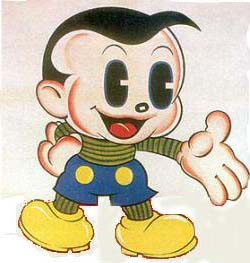 What is
Lindy Hop?
What is
Lindy Hop?This is Lindy Hop
If you are here, you must have wandered into this website by accident. Who are these people wearing goofy black and white shoes tossing each other into the air and generally acting like idiots? Welcome to the corner of Gymnastics Street and Insanity Avenue, located in the Twilight Zone just downtown from 139th and Amsterdam in 1927 Harlem, USA.
Lindy Hop is mostly a state of mind -- it starts when you have fantasies about being Fred (or Ginger) and living in a time when everything was elegant and every major trauma turns out to be a simple misunderstanding. After you are infected with the Art Deco bug, you find out about the hot music of the Harlem Renaissance and the jazz-inspired dancing that grew up right along side of it. The fever really hits when you discover you can actually use your body to express the feeling that the legendary music of Duke Ellington, Jimmy Lunceford or Cab Calloway puts in your mind.
You are hooked for life when you shed your Puritan black and gray uniform for the exotic colors and styles of Zoot fashion. The magic black and white Stacy Adams spectator shoes are the only vehicle that you need to truck on down the yellow brick road to the immortal Savoy Ballroom, a place that is far away from a cubicle as you can get. Jive, the official language of Lindy World, has no word for "bottom line", "cash flow" or "performance review." The only rule is "taint what you do, it's the way that you do it."
For those of you who have not yet escaped the boundaries of linear thought, the New Harvard Musical Dictionary can put the imprimatur of intellectual respectability on Lindy Hop and its associated concepts:
- LINDY HOP
- A social dance of the US, originating in the late 1920s
in New York
City and at first associated with the Savoy Ballroom in
Harlem. It was
danced to music (principally Swing) in fast duple meter
("8 to the
bar") and was characterized especially by
"breakaways" in
which partners in a couple separated and improvised steps
individually.
It incorporated movements in which partners swung one another
around and
sometimes took on an acrobatic character.
It is said that a "downtown" reporter saw the dance being performed in 1927 and asked whether it had a name; "Shorty" George Snowden, a Lindy pioneer, saw an opportunity and said that the dancers were celebrating Charles Lindbergh's flight across the Atlantic with "Lindy's Hop."
Known from the 1930s as "Jitterbug", it was widely danced until the late 1950s when prevailing taste in music shifted to a six beat format (the "Motown" beat). The Lindy Hop owes much to Charleston, Jazz and Tap steps, Ballet, and complex movements from Vienese Waltz. In 1943, Life Magazine characterized Lindy Hop as "America's National Folk Dance." As the dance spread from Harlem throughout the US, it mutated into variations that survive today including Jive, Bop, Shag, Balboa, and the Imperial. A close relative of Lindy Hop is "DC Hand Dancing", a form unique to the Washington D.C. metropolitan area.
- SWING
- A popular jazz-oriented big band jazz style that flourished in the 1930s. Featured are combinations such as five saxophones, four trumpets, four trombones, and often a vocalist. Piano, guitar, string bass and drums smoothly accentuate each beat in 4/4 while a "swinging" rhythmic pattern is played on the ride cymbal. Compositions are based on popular songs (especially 32 bar AABA forms) and 12 bar blues. The repertory ranges from complex entirely written arrangements to impromptu versions in which simple riffs provide thematic material and accompaniment to improvisations.
- BOOGIE-WOOGIE
- A piano style featuring percussive ostinato accompaniments. These steadily repeated bass patterns, one or two bars long, delineate the 12 bar blues progression. Melodies range from repeated figures, reinforcing the explicit beat (including tremolos, riffs, rapid triplets) to polyrhythmic improvisations.
- ZOOT
- A generic term for fashion worn by swing enthusiasts. The word is derived from "zuta" Spanish for "suit" [of clothes]. Wealthy Harlemites traveled to Cuba, Mexico, and Brazil and brought back Latin formal wear characterized by billowing high waisted trousers, long frock coats and broad-brimmed hats. The pants were ideal for performing the kicks and jumps involved in Lindy Hop, and the fashion trend evolved to feature extremes in both dimension and color. The expressiveness and color of the music was matched in zoot fashion. French designers continued to mine Zoot for years and the influence is still known by the couturier term "zazou."
- JITTERBUG
- Originally, jive slang for an alcoholic in the extreme throes of delirium tremens or DTs. The word was used by the established press in a pejorative way to express disregard for persons dancing the Lindy Hop. Like other attempts to suppress new movements with derision (e.g. "Beatnik", "Hippie", "Gangsta") the term "jitterbug" was adopted by those who it was intended to dissuade. The word came to refer not only to the persons who performed Lindy Hop but also became synonymous with the dance.
Final word: once you understand what the above technical definitions actually mean, you won't need to know about it at all. Get out and Get Hopping!
If you want to find out more about Lindy Hop, we suggest that you consult these other resources:
Counter for the ENTIRE Website
Home | About Lindy | 1940s Collectibles | Upcoming Events | Vintage Clothes
The Guide - Establishments - Travel - Accessories
Music | Links | Photo Gallery | Extras | Contact